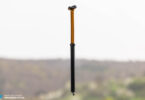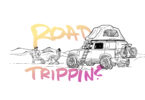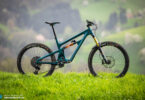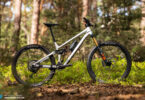I first sat down with Chris Ball, the director of the Enduro World Series, back in January 2013. We talked about dreams and visions, about how enduro had reached critical mass and was set to explode, and his ambitious plans for an international racing series. Looking back at that early interview, one quote stands out, “Our combined vision is to define enduro, steer development and look after it, helping riders professionalise within the sport.” Fast forward four years and the EWS’s success is unquestioned, evolving into a global super series, with eight sellout rounds supporting the careers of hundreds of young riders and generating millions for the tourism and cycling industry.
It’s probably fair to say that even Chris was surprised with the rapid growth, but as with anything that grows so quickly, like a firework, there’s always a danger of it burning out. With a number of high-profile series shutting up shop last year, Chris and the rest of the EWS team now have to ensure sustainability and maintain momentum. We caught up with Chris Ball to find out more in this open and revealing interview.
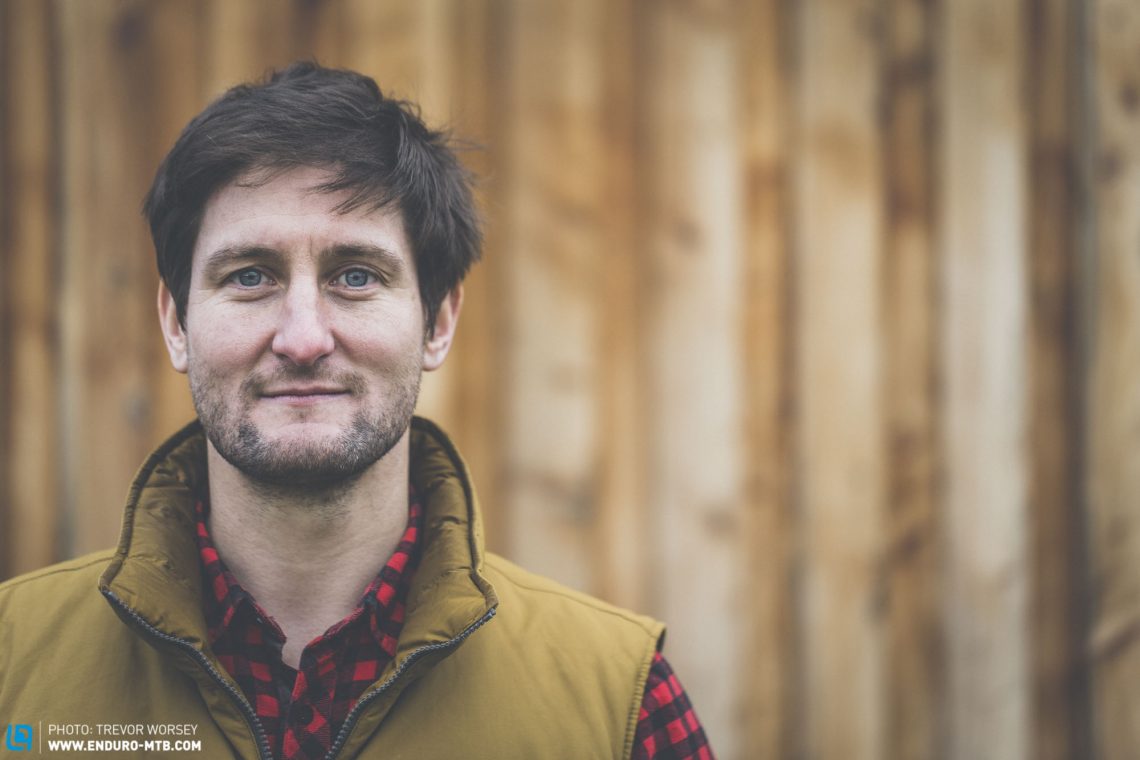
So, another year, another season. Is the EWS still on course?
Certainly, from the very beginning, we went through an exponential growth phase, it was a new discipline, a new sport. It was a massively exciting time for all of us. We had to adapt fast, and since then we’ve been running as quickly as we can. After the crazy initial growth it was important for us to enter a couple of years of consolidation, to make sure that the rules and practices were solid. To move forwards properly we had to look at a number of very mundane things, mundane but important building blocks, organisation and homogenising practice, a lot of internal stuff that was a lot of work. We brought our video production in-house which was a massive project, it meant we could control the messaging, the storytelling and show the sport for the amazing thing that it is. Having that control meant we could pull stuff together more and was a great step.
And what about now, what can we expect from this coming year?
I guess the big news is that after the consolidation years, with our great network of associates and archived footage, we’ve been able to agree a 3 year TV distribution deal with IMG Global which is just incredible. They will be taking on our highlight reels, and after Round 1 you’ll see us on the telly.
No way! That’s great. So how will that be distributed
IMG will handle all the distribution, we will continue to produce everything in-house and they’ll have a 26-minute highlight show from each event. Nine events in a year and a season round-up at the end. IMG will take it to the networks and they’ll do their thing with it. That’s come from two years of hard graft and is a really great step. It’s a big goal that has been achieved.
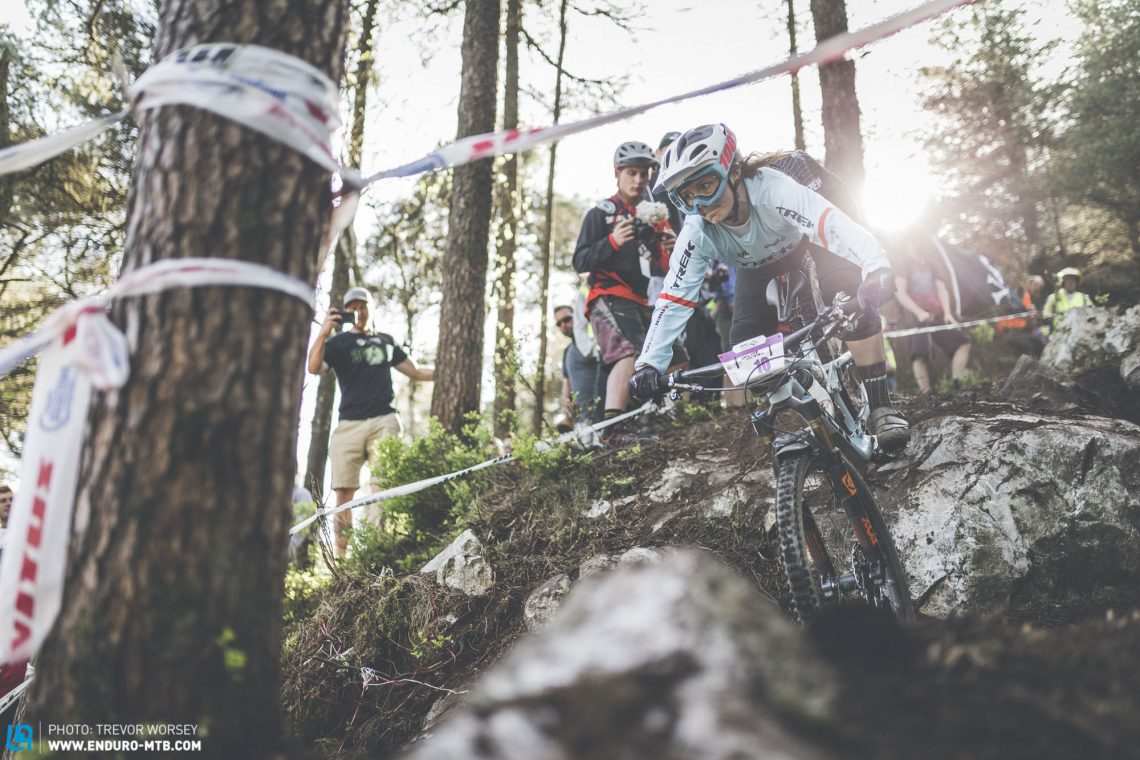
Can we talk about the hosts?
Tracy Moseley and Ric McLaughlin will be hosting the shows, Ric will be anchoring but he’ll miss one round because it clashes with some World Cup work, which is when Tracy will step in. We’ve been desperate to work more with Tracy as she is possibly mountain biking’s greatest ambassador. It’s amazing to work with her and help her to make the transition from pro mountain biker to new areas, she is such a great communicator so it’s going to be a year of learning for her and for us. We’re incredibly grateful that she is working with us. Ric is also going to bring a huge amount of knowledge from the World Cup Red Bull Production and we’re hoping to make the online coverage, still with Pinkbike, a bit more dynamic, a bit quicker, make it more tech, we’ll finally see a pit walk.
The coverage with Ric is going to be more dynamic and more behind the scenes in the build up to each event. We’re really excited to work with Ric and give people more of a flavour of what is going on at the venues, on the courses, and in the pits.
What about the qualifier series, there seem to be a lot more now?
Yes, the qualifier series has been very important. We felt we needed it as the events were selling out so fast, we wanted to make sure that there was an avenue in for any rider that really wanted to develop in the sport. Sporting pathways are crucial to any sports success. Last year we had 17 qualifier events from which around 140 riders qualified for this year’s series. The uptake from that has been great, with most of those riders taking up the places. We still have the lottery but it’s much smaller now as the qualifiers have taken more spots.
But what about Tasmania, that’s a long trip?
Even in Tasmania where you feel like if you go any further you’ll fall off the end of the planet, there are still almost 130 qualified riders making the trip. We’ve tried to be really global with the spread of the qualifiers so it’s really fair for people from all the major mountain biking regions of the world. In the future we need to focus on the developing events and areas like central and eastern Asia that don’t have the events yet, that’s a long term goal.
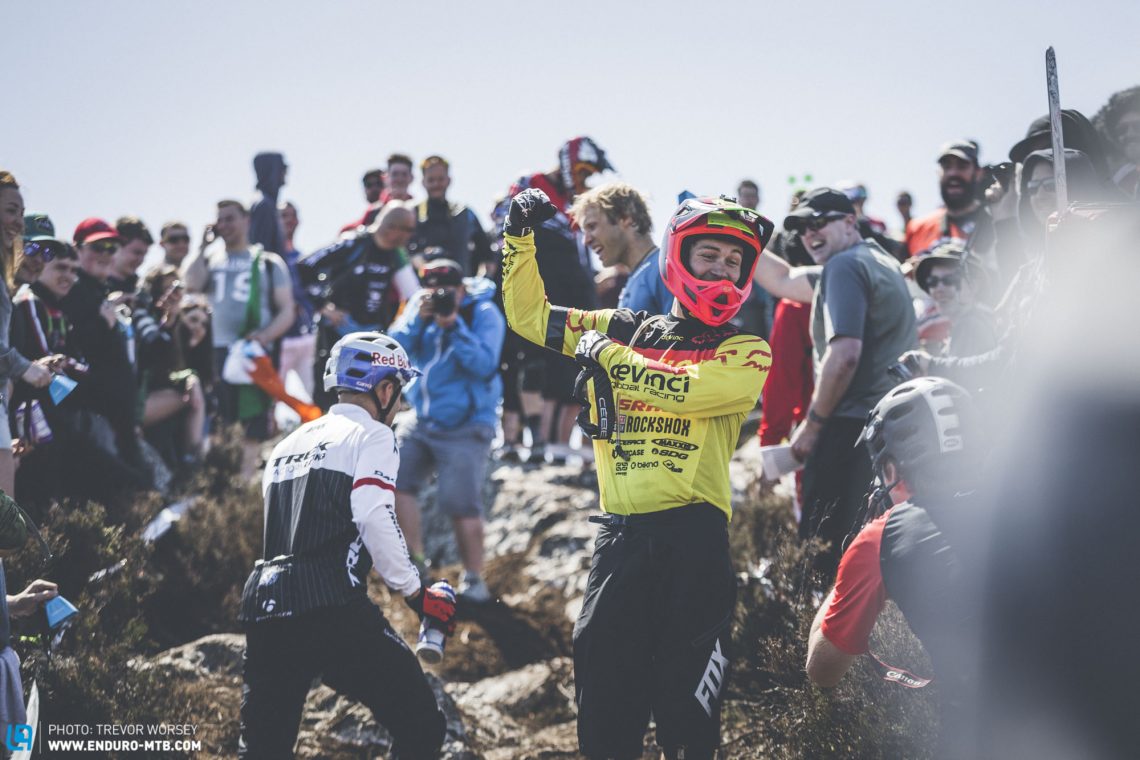
But you are running more than 17 qualifiers this year?
For sure, the system really works, last season was a bit of a soft launch, a bit of a trial, and it worked, the uptake from the riders was so good we launched 44 events this year. We now have 49 qualifier events on all the major continents, of course, we still have our eight EWS rounds on top of that. It gets even busier as we’ve also launched four EWS challenger events. They are four one-day races, participation based, come and have a go, enjoy, be part of it, don’t just watch racing on Sunday have a go on Saturday. So there are now 61 events in our sphere.
Nice, busy season then. Where will the challenger events be held?
We have one in Rotorua, then one in Tasmania, Ireland, and Whistler. The whole idea is that, as the sport gets more serious and higher consequence at the top end, we protect and maintain the elements of why we started it, which is participation and fun. Entries are open now for the challenger events. It’s a sample of the stages, no fixed start times, go and have some fun and get yourselves a stage time, then you can watch it on Sunday when you’re having a beer and say, I did that stage in 10 minutes, Richie did it in 3.
It’s just all about we’re keeping the riding vibe that we’ve become known for. You’ve got to be serious sometimes but you’ve got to have a laugh at times too.
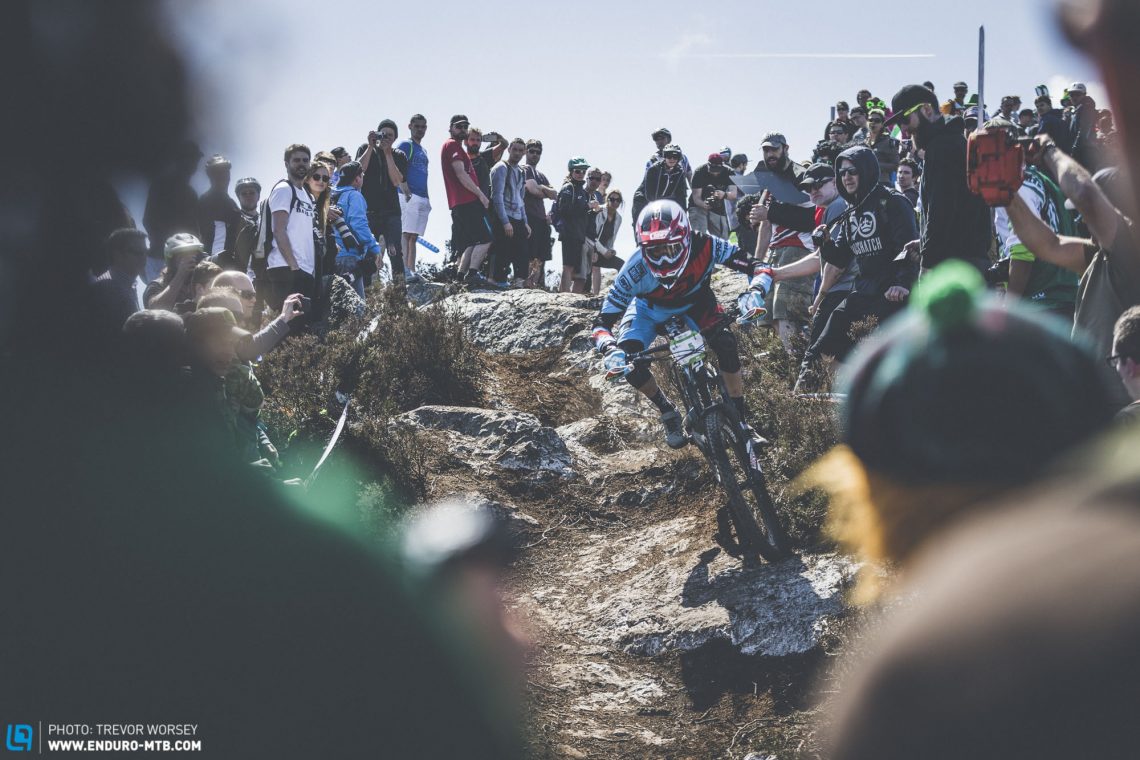
Speaking of serious issues, what about the environmental impact of the EWS. I know that’s something that plays on your mind?
Yes, you are right, there’s a real focus in the organisation to make sure we champion sustainable and responsible trail development. There is a wider discussion around environmental impact, but I think, we are in a position where we can, and we have to, make sure that our behaviour is ‘best practice’, and where the best practice doesn’t exist, we need to develop it. It starts with trails and then, ultimately, longer term, we need to look at how the general environmental impact of the series. Environmental Impact can be negative, but then you’ve got the economic impact which is positive. If you look at places like Tasmania or Madeira, if you want to reduce your environmental impact, don’t go to islands, but these islands are driven almost completely by tourism. So we’re helping to contribute to a local economy. It’s tough but we really have to weigh up the positives and the negatives. It’s great that the whole industry is starting to think more about sustainability.
Talking about weighing up, have you ever thought of the effect of the EWS on the industry?
We have sound bites and small bits of evidence from various brands and I don’t think that you need much more evidence than to look at the market, look at the technology. I think for years as a normal MTBer, we were riding poorly adapted XC bikes to deal with the terrain we wanted to ride, and now look what we have. I think that tyre and wheel tech has had the single biggest impact on the EWS, it’s insane, the growth of tech development and the reliability of those parts. Downhill, almost by its very nature promotes a very ‘throw away’ economy. You break a wheel, you change it at the finish line, you throw it away and you go back up. It doesn’t push to create a product that delivers something that consumers want or is good for them to use.
Just look at the development of the products and the fabric. We used to ride in outdoor clothing because MTB clothing was, well, crap. Now we’re seeing huge developments in fabrics that are specific just for MTB. We’re seeing a big focus on the physical attributes of bike riding not just the technical, so I think the impact has been vast, I don’t know how you’d measure it and I don’t think you could, but if you look through any magazines I don’t think you would struggle to see the ramifications in a positive way. I think the best case study we’re done is the impact study on Ainsa which showed the event itself was worth, over the 2 years from the announcement, 5 million euros to the local economy. Those were figures produced by the government. Ainsa also saw a 100% increase in bed nights from when we first announced the event, because people were like, “where’s that, we should go ride those trails”, and then the years after they also saw another 100% increase in bed nights. Of course, that put a strain on their trail access legislation so we’re currently allowing them to make sure they’ve got all the nuts and bolts in place to make MTBing sustainable in the area, but we will return.
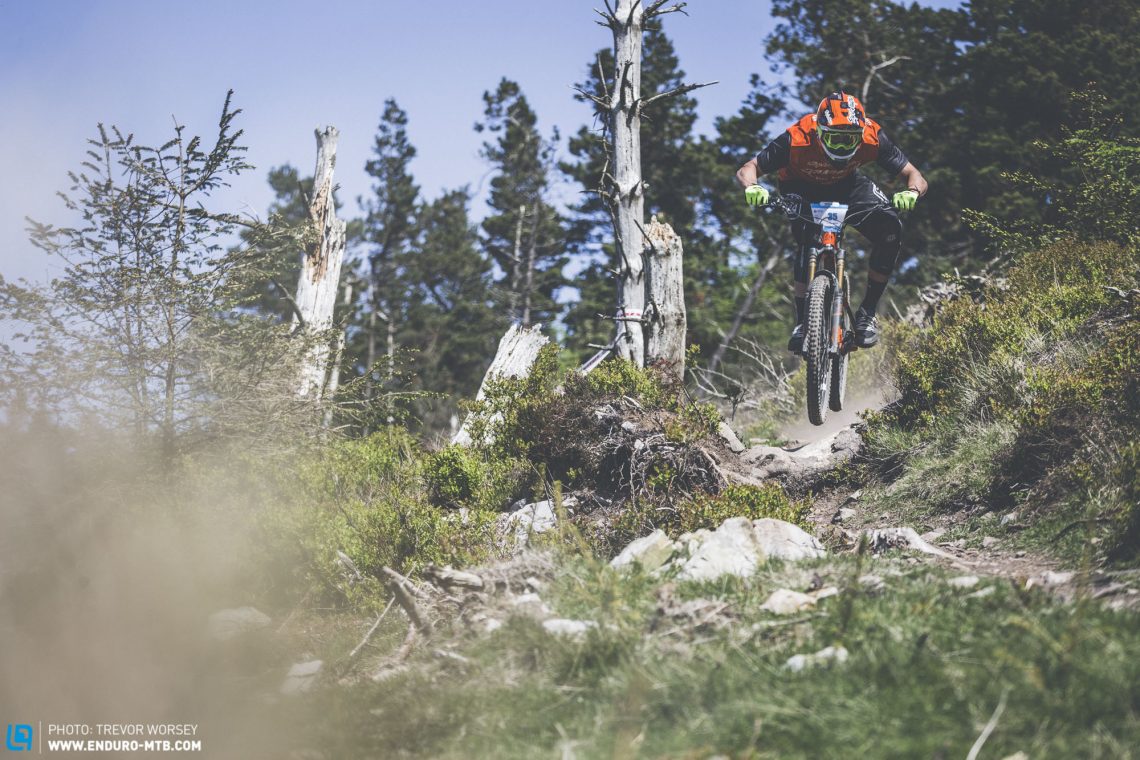
And what about the field, is it still growing?
Yes, very much so. We now have a record number of teams, 33, and a record number of nations, we have 43 this year, up from 34 last year. We are seeing far more South American involvement, we also have an Israeli team registered this year, we’re seeing a great global pickup in a nice healthy way.
How many rounds have you run now?
We have hit 30! Isn’t that amazing?
No way, and has anyone raced them all?
There were 7 riders who started all 30 events and 6 who finished all 30. Ines Thoma (finished 29) and Cecile Ravanel, Remy Absalon, Joe Barnes, Nico Lau, Mark Scott, Anita Gehrig have finished all 30! It shows the dedication, but also how tough it is, if you look at a lot of the big names, they all suffered an injury at some point. When you look at the numbers, in Finale alone, riders did more time on the clock than a decade of WC DH. now imagine racing all 30 events.
I remember chatting with you about this 4 years ago when the EWS was just a concept, are you now in a position that you can look at it and say, this is what we wanted and what we were hoping for?
Er, no. But only because we’re always striving to be better and delivering a better event to more people, the fact that we’re still here and that we’ve grown year on year both in terms of what we’ve been able to do, our coverage and the fanbase, our rider base, the amount of really good people and organisations we’ve met, that has exceeded expectations but I wouldn’t say we’ve achieved everything we wanted, there are still things we want to do.
What are your thoughts on the collapse of some of the national series, why can we not develop a structure there?
I don’t think, the coverage of what you’re talking about is necessarily reflected in reality. The two biggest cases are the British series and the German series, they are completely different cases and if you look behind them there is still such growth in events. No, the homogenised national series hasn’t worked but the participation in the sport is greater than ever. In the UK we have the Scottish series, arguably the national series, we recognised that from the beginning, as the venues are really good. Kev Duckworth also does a great job with PMBA, I think there was something like 54 events in the UK alone last year, arguably that is too many and we’ve seen that in a lot of countries. If we look at the US, what was the BMA series used to be the big flagship series but now almost every state has their own series, that put pressure on the North American enduro tour, just with the number of events that people are trying to do.
It’s harder to bring people together when you have a lot of people all in the start-up learning phases so I think it’s only natural, but the reality is that with the global picture of enduro events growth is still ridiculously huge, but the stopping of two national series has taken the limelight. In this country (UK) we haven’t even seen coverage of the new America national series, which is sponsored by IMBA, how incredible is that! That hasn’t trickled out in the news, all we have heard about is the German and British series. There’s also great growth in Australia and NZ, the Philippines, Sweden, Finland, even more engagement in Mexico, Brazil, Argentina, Costa Rica, Panama, Honduras, so many incredible countries are starting to have great events.
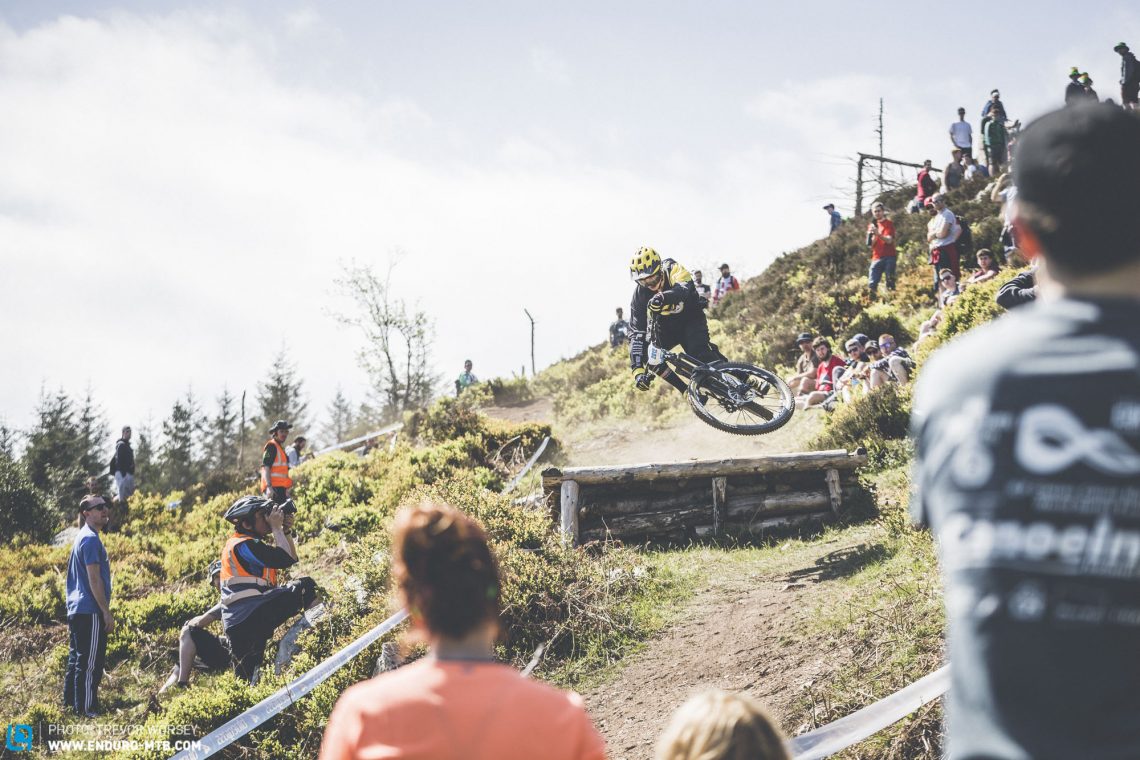
Last year was tough for the industry, has that caused you problems?
Yes and no, we’ve certainly never been well funded, and we’ve had too high aspirations. We are a light weight small organisation trying to achieve big things, I think we’ve seen growth year on year which has allowed us to employ more people and deliver more things. I hope we have a good rep for doing the right thing. For sure the industry isn’t in the best place right now, just like the global economy, there’s a lot of uncertainty. We’re just doing our thing and doing it the best we can and I think it’s working. We have the same support now as we did in year one which I think is a good thing, they raised their investment in us. All of the signs are positive
With the new TV deal, do you think we’ll see more sponsors from outside the industry, will we see a HONDA enduro bike one day?
Haha, now that would be a thing. Global sponsorship is not as easy as people think and there are a lot of very different needs across the different economies we visit. It’s easier said than done, and while I think the TV coverage will be brilliant at increasing the value for the riders, teams, events and organisers, we could not change to a global title sponsorship because it would be a step away from our model of working with organisers. It’s by no means a straightforward decision. Sven Martin once said, “so when are you going to get someone like Corona?” I was like “are you drinking a Corona Sven, is that why you’re thinking that?” The implications are huge. We’re in Colorado with Shimano and Yeti then 2 weeks later we’re in Whistler with SRAM and Specialized as title sponsors, it’s perfect. Some companies want to work in Colorado with BME, and some want to work in Canada with Crankworx, we can work with both, and keep everyone together.
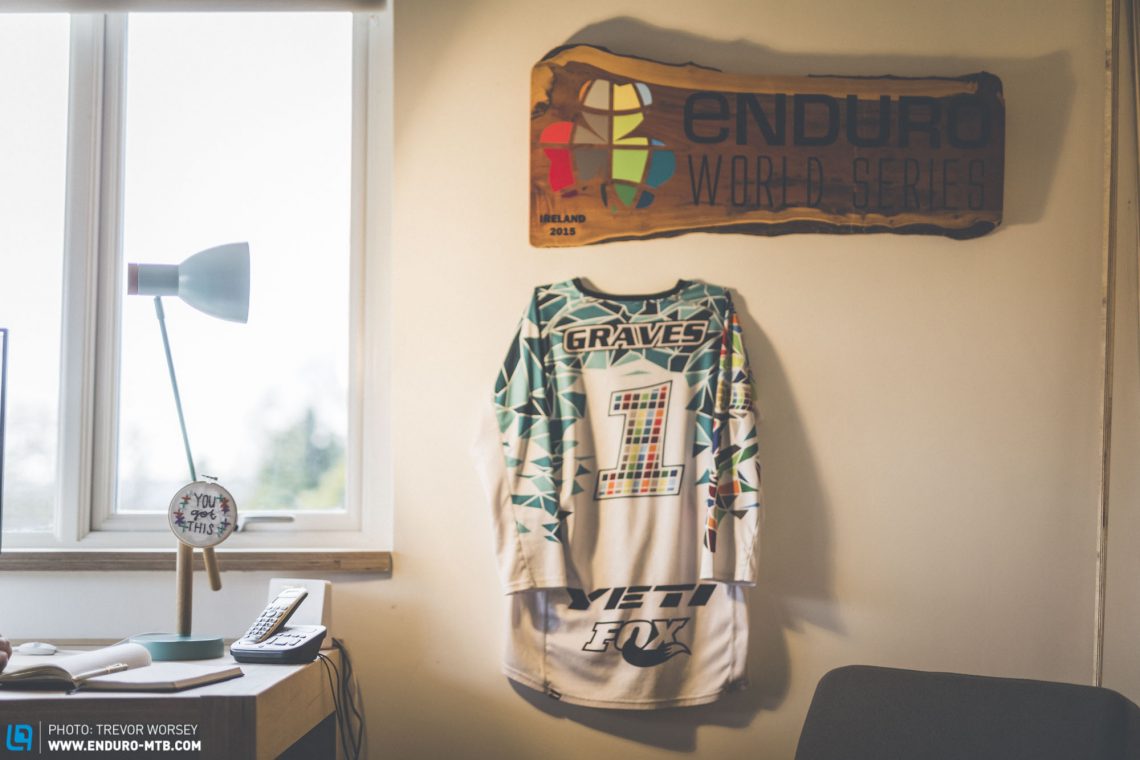
There were a few statements made this year about doping, what are your thoughts on that?
I don’t think any statements are in any way evidence-based, there is some chatter but it’s not in my experience at the moment an issue. In any sport, you’d be naive to think that it isn’t potentially an issue, it’s been on the top of our agenda since the beginning, and we’re closer than ever to an agreement with the UCI. Their focus for the last few years was on change internally and our focus on making the series grow has meant those chats have never been remotely unproductive, it’s just been a long process with 2 busy parties. Now we’ve developed the TV aspect with IMG and the qualifier structure globally along with stabilising the rulebook, along with medical tracking, doping control is one of our single biggest focus for us in the coming months and years, and it needs to be because it’s prevalent in every global sport. I don’t think we should be doing it without the UCI, there are so many complexities with the ethics and looking after the riders.
OK, so let’s jump to a different subject altogether, you have been in the game a long time and raced at World Cups. Do you have any advice for privateer racers?
Well, for me there are two key rules. If you’re a downhiller who can’t get a deal, don’t just decide that you want to move to enduro, I get so many emails like this. You need to first respect the sport, enjoy the sport and gain experience in the sport then look for sponsorship. There are a lot of people who try to get support way too early, it’s the same across any sport, it’s bloody difficult. Whether that’s getting into an Olympic rowing squad or whatever, it’s hard. I think often, young riders think they should get support before they’ve earned it. You need to make sure you put in the hard yards and never been in a position where you think you deserve something.
The second rule is just a good dude, all the young guys ask me what they need to do and I’m like, just don’t be a dick, it’s true. Be a good person, enjoy riding your bike, respect the trails that you ride, respect the local trail builders and community and just generally be a good person, be dedicated, ride in all weathers on all types of bike and you’ll stand yourself in good stead to get support longer term. Unless you’re insanely talented but even then that is a short term strategy. If you’re young, hard yards and being nice and respectful is the pathway.

What is your take on E-MTB racing, I have raced a few events and think perhaps it’s not a good use of the technology?
Haha, I’ve had 3 interviews about this in the last two weeks. In my own personal life, E-bikes have become central to my riding this winter, we’ve worked a lot with Cube and Bosch which has been insanely successful and so well received. That move attached e-bikes to the EWS for all the right reasons. Do I think that E-bikes should have their own categories? The simple answer is no. Fred and Enrico run e-bike categories in France and Italy, they are trialing stuff to see how it works. I think there just isn’t the economy of scales to be able to run a standalone event, they’re just so new. Putting a category would be easy, but I don’t think it’s where the sport should go. The benefits of E-bikes aren’t the same as mountain bikes, what is enjoyable is different. The whole point of enduro is that you select the most enjoyable bits, or the most fun bits, or the most challenging bits and you race on that part of the trail. E-bikes have different enjoyable bits of the trail, in my opinion, having ridden them.
As humans we have raced everything from ostriches to soap boxes, so it’s natural people want to race them, everyone gets a new bike and they want to race it. I think to make the most of it and to do e-bikes justice they need different structure, I don’t think it’s fair to restrict them to an MTB structure, the flipside to that is I also don’t think it’s fair to MTB and competitors of the MTB as we know it to be in a competition with an e-bike, I don’t think it benefits anyone at such very early stages. And how the hell would you police them, there is so much work to be done and no-one has the answer to that.
E-bikes get some bad press, but for me, it’s the first time MTB has the opportunity to be a participation sport. We all think as an MTBer “why doesn’t everyone love riding mountain bikes, but we forget that mountain biking is really hard and not very comfortable unless you’re into it. To get cycling to the scale of something like skiing or golf globally, we need to make the barrier to entry lower and e-bikes are the first thing I’ve ever seen to do that. To make it a competitive tool at this stage just wouldn’t benefit anyone, we have such a chance to show people the beauty of mountain biking and where bikes can take them, we should not spoil it.
That’s a nice approach, and what about the future, what’s next?
More of the same, continuing to see the sport grow on all the different levels, continuing to see more professional riders and amateurs having fun. Continuing to see a growth of enduro events globally and continuing to do our best at keeping everyone on the same page. Whether that is a long-term partnership with the UCI or just having all these organisers using our rulebook, we’ve always promoted working together as much as possible. If we can continue to do that in year 6,7,8 and onto our 10th anniversary, now wouldn’t that be amazing?
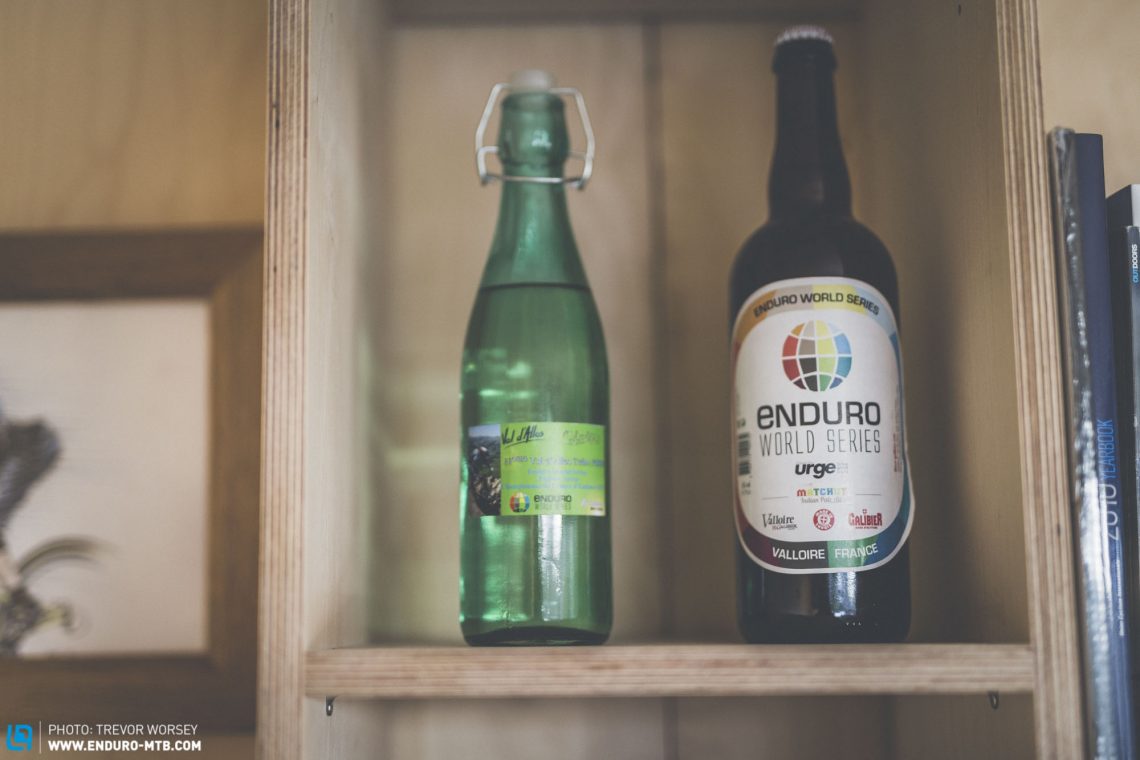
For more information on the Enduro World Series, you can check the Enduro World Series webpage.
Did you enjoy this article? If so, we would be stoked if you decide to support us with a monthly contribution. By becoming a supporter of ENDURO, you will help secure a sustainable future for high-quality mountain bike journalism. Click here to learn more.
Words & Photos:




